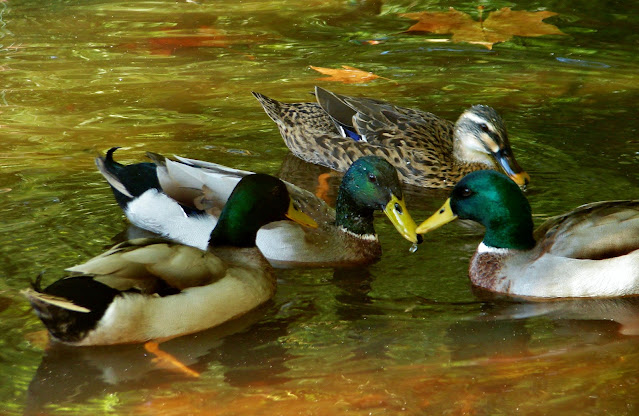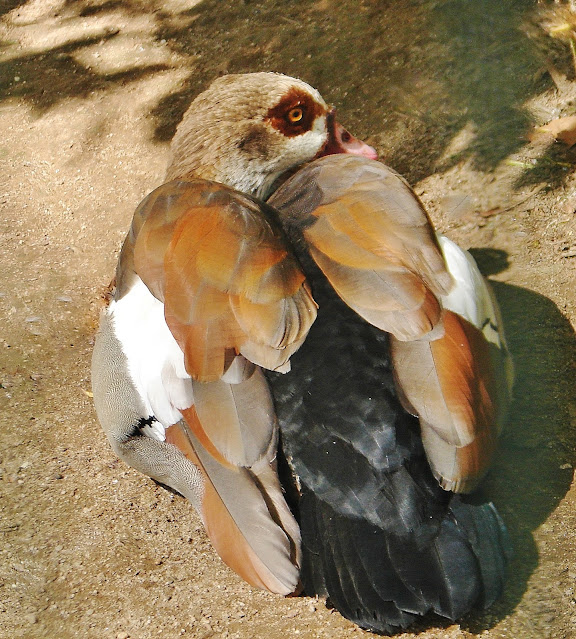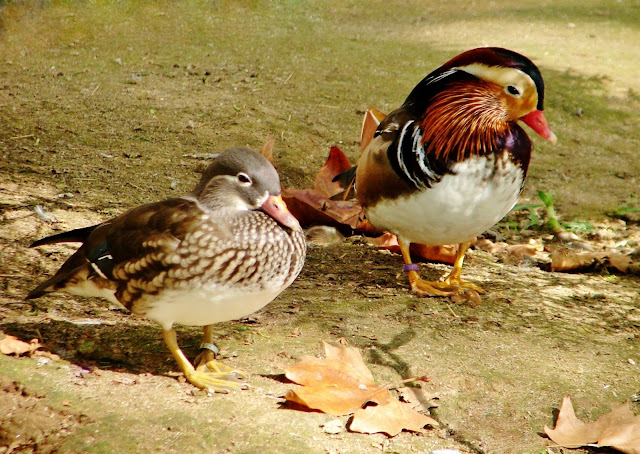First of all, my apologies for hardly any visiting done this past week. I have stayed away from my computer on doctors' orders because of several painful conditions Bursitis Elbow, and also a very painful neck and right shoulder, both of which have been caused by the repetitive movements made whilst blogging, so I will be taking a break until I am better. I am also anxious about Eva, who phoned me yesterday to say she is in an Oporto hospital with a Detached Retina, but since it is weekend can only be operated on Monday. I know this can be a serious, if not operated promptly, so I feel sick with worry. I also received word this morning that my dearest friend who is 95 has Covid and isn't expected to get through this night. I feel so sad, worried and sad. Sorry to be so downhearted, but if you can't tell your friends, who can you tell.
Sunday, 27 November 2022
Thursday, 17 November 2022
NOVEMBER and OCTOBER PHOTOS.
November weather has been unpleasantly cold, and we have had numerous thunderstorms and heavy rainfall since the beginning of this month, which is good for the garden after the draught. I have not been out, because Eva my daughter caught the Covid virus and kept her distance, until she was Covid free. Therefore, I have concentrated on nature in my garden, and what I can see from, and on, my balcony. I still have a few photos left from my visit to the nature reserve, but felt like a change, and can show them another time.
I knew whatever bird it turned out to be, would probably just be for reference, as my lens is not strong enough to capture a decent photo at that distance, but I'm sharing them anyway.
Perhaps you are wondering where the flash of white is. Unfortunately, it is not visible on these photos, as the white area is in the shade.
This is my simple bird bath / drinking station. It is just a plastic urn with a deepish plate on top, the kind you place under plant pots.:=)
This is one of the feeding stations, using the same idea, but with a heavy stone in the middle to stop the plates blowing away on windy days
Wednesday, 9 November 2022
THE MALLARD DUCK and the EGYPTION GOOSE.
Tuesday, 1 November 2022
THE MANDARIN DUCK Aix galericulata
The week after my visit to the estuary with my daughter, Eva had two out of town appointments, so she invited me to go with her, but would drop me off at a nearby nature reserve and join me later for tea. Naturally I thought it was a splendid idea and accompanied her with the greatest of pleasure. We had an early lunch and set off at1 o'clock, arriving an hour later. It was a warm sunny day but there was a slightly cooler breeze in the air, the first of the season.I had wisely taken a warm jacket along just in case it would be needed.Eva departed with a wave and "see you later," and off I went on a leisurely stroll through the quiet nature reserve. Except for the tearoom, the reserve was almost deserted, so I had the luxury of having the park all to myself.There were many pretty flowered shrubs along the pathways which I took pleasure in photographing, and a few banana trees in the gardens, and then I saw the beautiful Mandarin Ducks, and their stunning plumage. This exotic species native to East Asia China, Japan, Korea, and eastern Russa, have also been introduced in many countries.
Paraguay Nightshade
Same as above.
Bougainvillea
Very green bananas. I hope they ripen before the colder weather starts.
At first, I thought Rhododendron, but I am not sure.
The male Mandarin Duck in all his splendour.
Here you can see the subdued browns and greys of the female, but a white circle round her eye and white stripe makes her most attractive in my eyes.
Here you have a better view of the purple-coloured breast. The male is a fine looking fellow, but he doesn't always look like this. After the mating season his colourful plumage does not return.Instead, his feathers are made up of brown and grey making him look like his female counterpart. Often the only way to tell them apart at this time is to look at their bills. The males retain the red that females lack.
In the Fall, the male will molt again into breeding plumage to prepare for the breeding season, and dazzle with his coat of many colours once more. Look how the white encircles the eye of the female and makes the eyes stand out.
The mottled flanks, and white line circling the beak is most attractive.
Mandrin ducks are monogamous, pair bonds may continue for many seasons. They symbolize wedded happiness and fidelity in traditional Chinese lore.
Since I took more photos from under the banana leaves, I am including these two photos in this post. These pendulums are the blossom of the banana tree.
Can you please let me know, if you are familiar with these flowers and at what stage they are ready to bloom.






























































